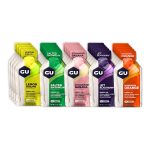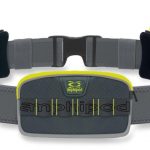At the age of 37 I trained for and ran my first marathon, the 2015 Los Angeles Marathon. Although I enjoy distance running, the full marathon for me was meant to be a one time, bucket list type of activity. I just wanted to set a decent time and be happy with it for the rest of my life. My goal was to finish in under 4 hours but that year turned out to be the hottest L.A. Marathon on record. Temperatures reached into the 90’s which made things very difficult, and dozens of people went to the hospital with heat stroke. Under the conditions you could say that I was satisfied with my time of 4 hours, 34 minutes and 35 seconds. But I knew I wouldn’t be satisfied with wondering for the rest of my life what I could have done if the weather was different.
Training for a full marathon is ridiculously time consuming and I really wasn’t up for doing it again right away. I was glad to get my life back and my wife was glad to get me back, too. So I decided to wait a few years and try again in 2018 when I would be the youngest in the 40 and up group. And this time I’m doing things a little bit differently. So here are four things I’m doing differently this time around:
1. Running “Naked”
No, I don’t mean running without clothes on. I mean running without all the digital bits keeping track of everything.
While I was training for my first marathon, as well as for a number of half marathons since then, I was using a GPS watch and heart rate monitor, constantly monitoring my pace and training using heart rate zones, trying to estimate my VO2 max and all kinds of other things. I even had a plan for what my heart rate should be for every mile of the marathon.
This time I decided to ditch the heart rate monitor strap and just run purely by feel. I’m still using the GPS watch to record my runs so I’m not going truly “naked” but I’m no longer paying attention to my current pace while I’m out there running. And as it turns out, I’m actually running faster now than I was before when I was constantly monitoring everything. The pace that feels like my “easy pace” now is actually quite a bit faster than the pace I was doing when I was following what should have been my easy pace according to my heart rate. And the same thing seemed to be true for my race pace when I ran a half marathon race a few weeks ago.
I’ve found that I can do a pretty good job of regulating my pace by changing up my breathing pattern, and it’s actually a more consistent method than trying to adjust my pace based on what the GPS is reporting. The GPS pace is very accurate over longer distances but the display fluctuates quite a bit when you’re looking at it on a second-by-second basis, making it difficult to make adjustments and maintain a consistent speed.
In the end, freeing myself from constantly thinking about the numbers has freed my mind and that been making my training more enjoyable, and I’m actually running faster in the end.
2. Energy Gels

GU Energy Gels
For quite a while I was resistant to the idea of using energy gels on my runs. I figured if none of the marathon winners from the first 100 years or so of marathon history needed them to finish, neither did I. Also, one of the things that I like about running is that you don’t need any special equipment and you don’t need to drive to any special venue to do it. Just put on some shoes, open the front door and go running! As long as you don’t get all caught up in marketing hype and buying all the latest gear, running can be a very cheap activity and that is very appealing to me because, well, I’m cheap!
But energy gels are not cheap. For example, GU Gels can be up to $2 + tax if you buy them individually. If you follow the manufacturer’s recommendation and take one 5 minutes before the run and one more every 45 minutes during and go for a 3 hour run, well you can be spending $8 to go for one run, and that to me just seems like a ridiculous price to pay for something that should essentially be free.
Nevertheless, I needed to see if they would really work so I went out for a trial run, consuming $8 worth of gels. You can get these gels for cheaper if you buy them in bulk on Amazon or whatever, but I didn’t want to commit to buying a whole box if they didn’t work for me or if I didn’t like them. So I went down to a local bike shop and bought a few to try them out on a planned 18 mile run.
I have no idea why I was even slightly skeptical that they would work. Extensive research has been done on endurance athletes and consuming calories while doing these activities definitely does improve performance. And boy did they really work. Not only did my legs not feel tired at the end of my 18 mile run, I actually turned up the pace the last two miles and still felt much better than I did at the end of the 17, 16 and 15 mile runs I did in the previous weeks.
So they totally work. But are they worth it? Well, since my goal is to set a time I can be happy with for the rest of my life (and thus, never have to run another marathon ever again), so why not take every advantage I can get? The one box will last just long enough to get me through my training and the marathon itself and then I’ll probably never buy them again. You really don’t need these gels if you’re not running for over 2 hours, and after this marathon I don’t plan on running anything longer than a half marathon any time soon. So the price of one box of gels seems pretty good when weighed against a lifetime of being happy with my time (I hope). And no, this is not an endorsement for any particular brand of energy gels.
3. Hydration Strategy (a.k.a. Pee Strategy)

Pay $65 to carry 5 lbs of extra weight? How I can I turn that down?
I hate the idea of carrying water on my runs. It just seems like carrying a bunch of dead weight to me. Also those water carrying belts are expensive, and like I said, I’m cheap. So I’ve always planned my long routes so that I’ll run past a public drinking fountain at least every 2 to 4 miles or so.
But while training for my first marathon and reading so many different things about it, I was paranoid about not being hydrated enough. I kept drinking and drinking the day before and the morning of the big race. I remember showing up to the stadium with a 16 oz bottle of water and drinking the whole thing. And even though I used one of the porta potties just before the beginning of the marathon, I still started the marathon with a strong urge to pee.
Every time I came across some porta potties along the marathon route there seemed to be a long line of people waiting to use them. I was trying to set a good time so I didn’t want to stand around in a line so I kept on running. Finally at mile twelve there were some porta potties without a line and I used one. Yes, I held my pee for 12 miles. Never before or after have I ever felt such sweet relief in my life.
Because of that experience during my first marathon, and also because lately I’ve found myself needing to find restrooms along the way during my long training runs, I’ve been experimenting with not drinking water right before I run. I started out by cutting myself off at 30 minutes before the run but I would still find myself needing to go to the bathroom within a mile or two of starting my run. Now I’ve settled at cutting myself off of water an hour before the run, and going to the bathroom immediately before I run. That seems to prevent me from needing to relieve myself during the run, and drinking water during the run seems to be enough to keep me hydrated.
But I was still worried about not being hydrated enough for a full marathon with this strategy, so I started doing some more research. It turns out that when it comes to marathons, over-hydration is actually a much bigger problem than dehydration. Apparently no one has ever died of dehydration during a marathon, but many people have actually died from water toxicity as a result of drinking too much water during marathons and some people even suffer from water toxicity even though they only drink Gatorade the whole time.
So while I do of course still keep hydrating while out on the course, I’m now less obsessive about saturating my body with water the day and hours and minutes before my long runs. As I mentioned before, what I want out of this next marathon is to set a time I can be proud of for the rest of my life. So I don’t want to waste any time standing in line to go pee during the race, and I definitely don’t want to end up running almost half of the race holding it in again! And not only will this strategy help me (I hope) on race day, it has already helped make my training runs a lot easier.
Sorry for the rather unglamorous bathroom talk, but hey, this is real life!
4. Doing More 20 Mile Runs
It seems to be generally accepted that while training for a marathon a) you should do at least one 20 mile run, and b) you don’t need to run longer than 20 miles on any of your training runs.
For my first marathon I used the Novice 1 training program by Hal Higdon. It’s an 18 week program that builds up to one 20 mile run before tapering off leading up to the race. It’s pretty much just for novice runners who just want to survive running a marathon.
For this year I decided I didn’t want to take any chances. I wanted to train harder. I don’t want to just survive the run. Even if the weather is bad again, I want to set a time under 4 hours, and well under 4 hours if the weather is good. But there is another major difference with my training this time around — I have a 21 month old daughter that needs a lot of my time, care and attention.
Enter Hal Higdon’s Marathon 3 program, so called because it has running on only three days a week instead of four. This helps somewhat with my duties as a parent (and husband). But this plan is 24 weeks instead of 18 weeks and instead of just one 20 miler it builds up to three runs of 20 miles each, spread out over 5 weeks. Six months seemed like a long time to be training and three 20 milers seemed like it would be a lot of hours just pounding the pavement when I could be doing something else with my time but I decided to go for it anyway.
At the time I’m writing this, I’ve already done two of the 20 mile runs and I’ll be doing the third and final one this weekend. I’m definitely in much better shape for this marathon than I was in 2015. I set a new half marathon personal record a few weeks ago and a new 10K PR this past weekend. These races were also part of the “Marathon 3” training plan.
I’m pumped up and ready to go. I’m ready to attack this marathon and ready to set a time I can be proud of for the rest of my life. Will it really be my last marathon? I don’t know. I love distance running but I definitely don’t see myself doing this again for at least like 5 or 10 more years. Marathons are really no fun… but you’ll still find me hitting the half marathons at least once a year :)

